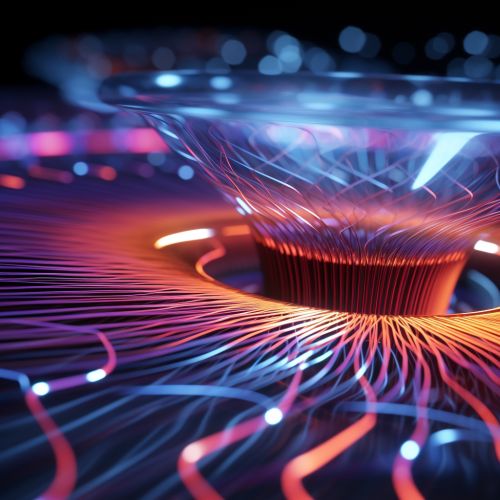Flux pinning
Introduction
Flux pinning is a phenomenon that occurs in superconducting materials, where the magnetic field lines, or flux lines, are pinned in place within the superconducting material. This pinning prevents the flux lines from moving, which in turn prevents the loss of superconductivity due to changes in the magnetic field. This phenomenon is of great importance in the field of physics, particularly in the study of superconducting materials and their applications.
Understanding Flux Pinning
Flux pinning is a complex phenomenon that involves several different physical processes. At its most basic, it can be understood as a result of the interaction between the magnetic field and the superconducting material. When a magnetic field is applied to a superconducting material, the field lines penetrate the material and form a lattice of vortices. These vortices are regions where the superconducting state is suppressed, and normal, non-superconducting state exists. The vortices carry a quantized amount of magnetic flux, hence the term 'flux lines'.


The vortices in a superconducting material want to move in response to an applied current or a change in the magnetic field. However, this movement leads to energy dissipation, which can cause the superconducting state to break down. This is where flux pinning comes into play. If the vortices can be pinned in place, they won't move, and the superconducting state can be maintained even in the presence of currents or changing magnetic fields.
Mechanisms of Flux Pinning
There are several mechanisms through which flux pinning can occur. These include:
1. Normal-state pinning: This occurs when there are regions in the superconducting material that are in the normal, non-superconducting state. These regions can pin the vortices and prevent them from moving.
2. Dislocation pinning: This occurs when there are dislocations in the crystal structure of the superconducting material. These dislocations can act as pinning centers for the vortices.
3. Grain boundary pinning: This occurs when there are grain boundaries in the superconducting material. The grain boundaries can act as barriers to the movement of the vortices.
4. Point defect pinning: This occurs when there are point defects in the crystal structure of the superconducting material. These point defects can act as pinning centers for the vortices.
Importance of Flux Pinning
Flux pinning is of great importance in the study and application of superconducting materials. By pinning the vortices in place, it is possible to maintain the superconducting state even in the presence of currents or changing magnetic fields. This is crucial for many applications of superconductors, such as MRI machines, particle accelerators, and superconducting magnets.
Challenges and Future Directions
Despite the importance of flux pinning, there are still many challenges to be overcome. One of the main challenges is understanding the exact mechanisms of flux pinning and how to control them. This is a complex problem that involves understanding the interactions between the vortices, the superconducting material, and the pinning centers.
Another challenge is improving the pinning strength. The stronger the pinning, the higher the current that can be carried by the superconductor without loss of superconductivity. This is crucial for many applications, such as power transmission and magnetic levitation trains.
Despite these challenges, there is ongoing research in this area, and it is hoped that a better understanding of flux pinning will lead to the development of more efficient and powerful superconducting devices in the future.
